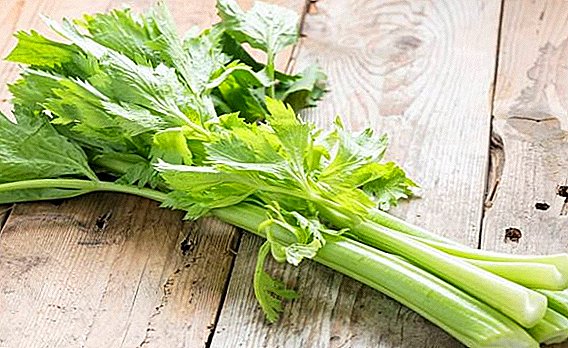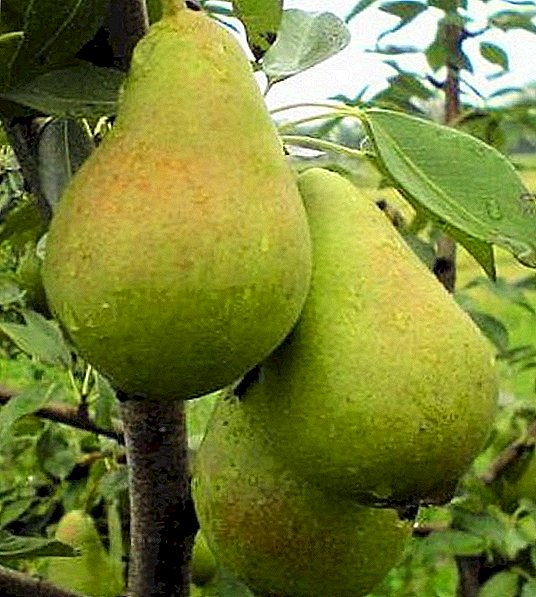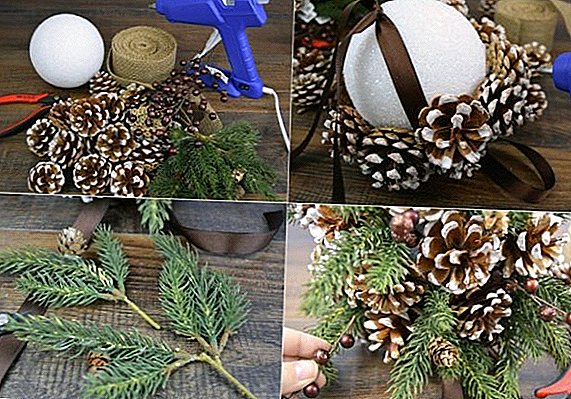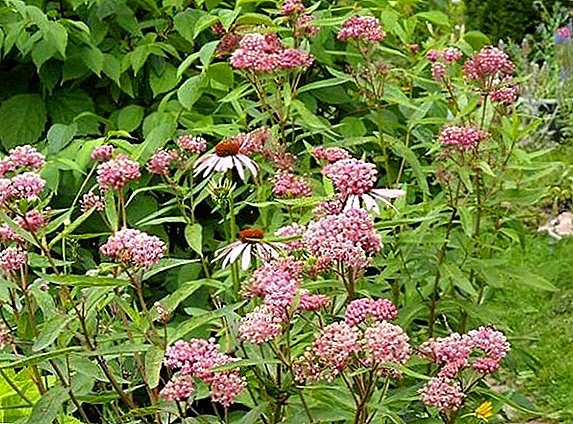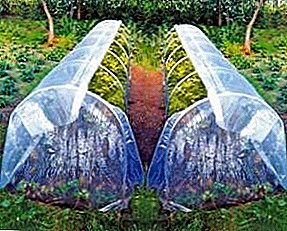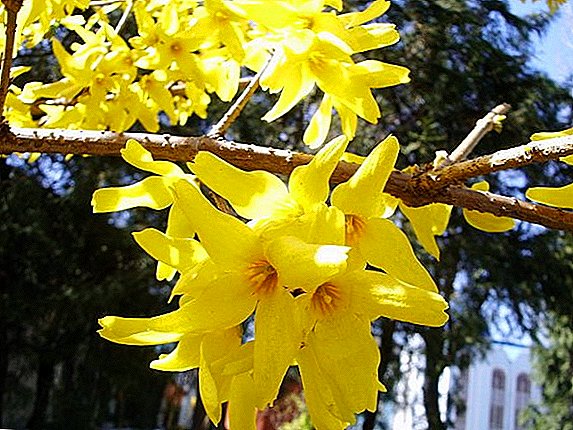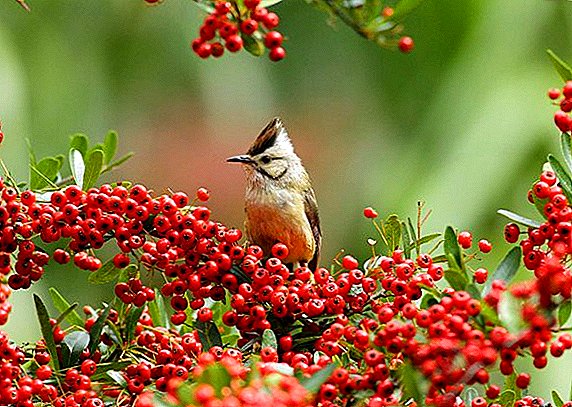 Spectacular ornamental plant originally from Southeast Asia with the marvelous name "Pyracantha" is increasingly used in the creation of landscape design. This perennial plant pleases gardeners in the spring with abundant flowering, and in the fall - with rich bright fruits.
Spectacular ornamental plant originally from Southeast Asia with the marvelous name "Pyracantha" is increasingly used in the creation of landscape design. This perennial plant pleases gardeners in the spring with abundant flowering, and in the fall - with rich bright fruits.
Botanical description
Perennial, and in growing conditions in a warm climate - an evergreen, has oval-shaped leaves of dark green color and sharp thorns, reaching 2.5 cm in length. The bush blossoms in the spring very plentifully: behind white small florets not only branches, but also leaves are not visible.
On your plot you can grow other ornamental shrubs, for example, horizontal cotoneaster, broom, camellia, lilac, bobovnik, rhododendron, wolfberry, skoumpiyu, and ryabnik.
Pyracanthus flowers have an incredibly pleasant aroma and are distinguished by remarkable honey qualities. During the fruiting shrub is covered with berries of yellow, orange or bright scarlet color. In regions with a temperate and cold climate, the pyracanthus does not shed its leaves - they simply acquire a red color.  Pyracantha belongs to the Rosaceae genus and is included in the Apple family of the subfamily, so its fruits can be safely considered as small apples. Translated from the Greek name of the bush means "fire".
Pyracantha belongs to the Rosaceae genus and is included in the Apple family of the subfamily, so its fruits can be safely considered as small apples. Translated from the Greek name of the bush means "fire".
Did you know? The second name, which wears a shrub, sounds like "fire thorn." Only the opinion why the plant is so called, diverges: some gardeners insist that the shrub is so called because of the fiery red fruits that cover the bush throughout the autumn and winter, and others - that because of the few thorns of the plant, the injection of which is very painful and stinging.

Types and varieties
The pyracanthus includes seven species of shrubs. The bush can be upright and sprawling:
- Pinacea pyracantha. Used to create a hedge, can reach a height of 4 meters. The plant stems are covered with narrow leaves and have sharp thorns. During the fruiting period, the berries acquire a rich orange color.
- Pyracantha is bright red, as shown in the photo, does not differ in height, and the crown width can reach 5 meters in diameter, which should be taken into account during planting. It is used to create a hedge, as it easily transfers forming and deep pruning, does not require frequent watering and special care. The fruits of this species have a bright red color.
- Scarlet Pyracantha. Used to create hedges on scanty, rocky soil.
- Gorodnaya pyracanta used for stone garden decorations, creating borders, hedges.




Where to plant a pyranthant?
Pyracantha grows on completely different soil: it is not demanding on the composition of the earth, but does not like transplants very much.
Lighting and location
The lighting and the choice of the place of the pyracantha are more demanding, since the decorativeness of the plant is lost in the shade, and the color of its leaves suffers in sunny areas. Therefore, when planting this bush must choose a place protected from the winds and in the penumbra.
Soil for the plant
The plant is absolutely not demanding to the composition of the soil, it can grow even on calcareous lands.
Landing
In an effort to get a beautiful bush pyracanthus, during planting and proper care, you must remember that this plant loves hills, plains, but not lowlands.
Important! Pyracantha, who was planted in the valley, is sick and does not develop well.
Plant a seedling in early spring as soon as the soil thaws. The landing pit is dug to a depth that is twice as large as the earthen bed with which the plant is planted. The bottom is carefully loosened, the excavated earth is mixed with the compost and laid out in a small layer. The seedling is set and covered with the remaining earth.

From seed
Planting seed pyracanths is made autumn, closer to winter. From the seeds you can grow only pyracanths that are found in the wild - the varietal characteristics of the plant can be lost.
When breeding an ornamental shrub with the help of seeds, the first priority is collection of planting material. The seeds are in the berries of pyracanths, they need to be given time to ripen. The best time to collect seeds is mid-autumn. The collected berries need a little dry, then remove the seeds from them, thoroughly rinse and spread out to dry.
In late autumn, seeds are sown in the prepared beds to a depth of 3 cm. Garden beds are prepared a week before the intended landing of plants. This area is dug up to a depth of 30-40 cm, humus is added, the earth is thoroughly mixed with fertilizer and leveled with a rake. In spring there are shoots - friendly, but different in growth and color of the leaf. For planting hedges are selected identical seedlings.
You can also sow seeds in springbut for this it is necessary to begin the process of stratification at the beginning of winter, which is not very convenient. Seeds are sown in a box with moistened peat, which is placed in a refrigerator for a period of three months. During this period, it is necessary to maintain the moisture content of peat. 
From cuttings
Also pyracanthus propagates by cuttings. This method allows you to breed decorative garden varieties of plants with the preservation of all maternal characteristics. The tops of the branches that remained after the summer pruning can be used as cuttings. Lignified cuttings can also be used, but the former will root faster.
Healthy and strong stems up to 20 cm in length (leaves are removed from them) are selected from the cut branches and placed in a solution that accelerates the formation of roots for a while. After that, they are planted in the wet sand in the greenhouse for rooting. In the process of rooting, it must be remembered that the cuttings need fresh air and moisture.
After three to four weeks, the rooting process can be considered complete. In a couple of months you will be able to note the growth of the bush. In greenhouse conditions, the bush is grown for a year - after it is planted in open ground.
As a hedge, thuja, thorns, boxwood, hawthorn, forsythia, privet, barberry of Turnberg are often planted.
How to care?
Pyracantha is a shrub that requires minimal attention:
- pruning in the spring with passing removal of fruits;
- one dressing per season;
- moderate watering.

Important! When working with a pyracantum, take care of your own safety and remember about painful spikes. Protect your hands with thick gloves.
Watering
Pyracantha is a drought-resistant plant. In nature, it is often found growing on sandy slopes and scree.
Top dressing
In the spring, the bush is fed by applying organic or mineral complex fertilizers. You can use top dressing in the form of granules - they are more durable.
Pruning
Pyracantha grows very quickly, so forming pruning is needed to create the shape of the plant. The main pruning is carried out in early spring, in the period before the pyracant has gone to growth. When pruning need to remove the berries of the last harvest.

Did you know? Pirakantu is very easy to form, to create interesting compositions in form. To do this, you need to bind the main branches to the support, and when the plant gets used, the support is removed, and the bush acquires the shape you need, which you simply need to maintain by trimming the branches that are not in the wrong direction.
In late August, sanitary pruning is done to rejuvenate the pyranthant.
How does the plant overwinter?
The bush does not need shelter. Very often, in our latitudes, with very strong frosts, some branches freeze slightly, but, as a rule, they recover very quickly. It is noticed that even short-term frosts of -20 ° C, without the presence of snow, do not bring any tangible harm to the plant.

Diseases and pests
This ornamental shrub is quite resistant to diseases and pests, but if growing conditions are not met, The plant may be affected:
- fungus;
- bacterial burn;
- louse.
Features of cultivation (in the room, bonsai)
Peculiarities of growing pirakanty at home reduced to following the rules:
- Providing fresh air, otherwise the plant will be susceptible to diseases and pests.
- Pyracanthus painfully reacts to both excess moisture and its deficiency. It should be watered regularly and abundantly, especially when it blooms. Water that accumulates in the pan must be drained.
- During the winter period it is necessary to provide a pyracante a rest period. To do this, the bush is placed in a room with dry air and temperature indicators slightly above 0 ° C, watering is minimized.
- It is possible to replant a pyracantha not more than 3 years later, since she does not like much when her root system is disturbed.

For cultivation in a pot, use a scarlet or boring pyranth, forming a stem-shaped plant.
When creating bonsai from Piracanthus, use young shoots of the bush, as they easily take on the desired shape. But, working with them, do not forget about accuracy, as the green shoots are characterized by increased fragility.


